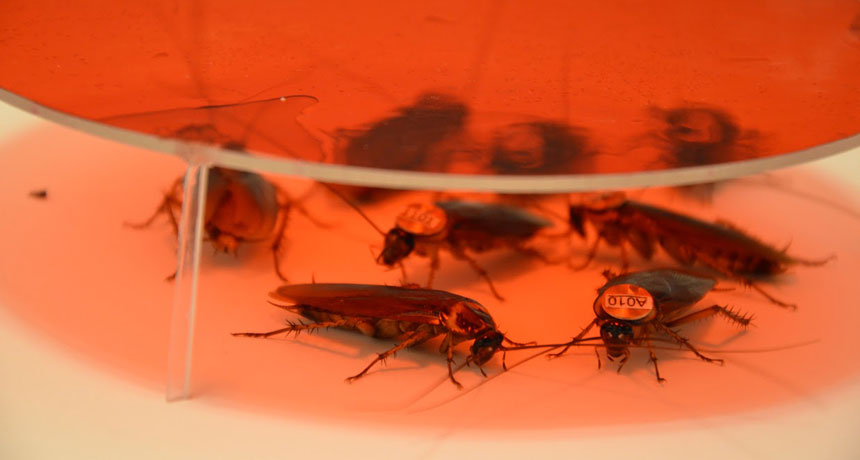
GOOD COMPANY Personalities of individual American cockroaches affect how quickly a scurrying mass chooses a shelter to hide from light.
I. Planas-Sitjá
Like certain other members of the animal kingdom (we’re talking about you, people!), cockroaches also have issues with personalities that drag out a group’s attempts to make collective decisions.
Lab tests show that male American roaches (Periplaneta americana) have an animal version of individual personality, says Isaac Planas of the Free University of Brussels. And the mix of these personalities in a group influences how quickly, or molasses-slowly, clusters of roaches come to consensus over where to hide together in a crisis, he and his colleagues report February 4 in Proceedings of the Royal Society B.
American roaches make an intriguing species for studying group decisions, Planas says, because the roaches tend to pal together, but he sees no sign that some alpha roach is in charge.
To see if individual roaches showed any consistent behaviors — what in people would be called a personality — he released them into a well-lit arena. He set up two shelters by putting a red filter over a container, giving the roaches a sense of dark refuge because they can’t see red wavelengths well. Then he watched for three hours to see how the majority eventually ended up in one of the two available shelters.
|
GET IT TOGETHER A series of lab snapshots from various angles shows how a group of cockroaches eventually reaches a consensus about which red-tinted shelter the group will share. I. Planas-Sitjá |
In trials repeated three times during a week, individual roaches remained fairly consistent in choosing whether to stay longer or shorter times in a cozy, dark shelter away from light. Planas also kept track of the order in which individual roaches entered a possible refuge to explore. A tendency for a roach to be among the early pioneers or the later discoverers remained fairly consistent.
The speed at which a group reaches consensus reflects the mix of individual personalities within the scurrying mass, he says. Groups dominated by roaches that tend to linger long in cozy darkness were quick collective deciders, ending up almost all in the same shelter within about 90 minutes. And groups dominated by the more restless among the hiding roaches, the ones less likely to stick in the same place, typically took more than two hours. Mixing the types led a group to score in the middle range of speed in reaching consensus.
The shelters that Planas offered the roaches in these basic tests were identical. He now wonders whether, given a poor shelter and a great one, personality-driven group dynamics will affect how wisely the roaches choose. Roach clusters prone to scurry rapidly to consensus might, or might not, make group mistakes.
This research builds on a surge of studies uncovering a range of consistent behavioral trends in animals, says Jonathan Pruitt of the University of Pittsburgh. He has documented behavioral syndromes, or personalities, in cooperatively hunting spiders, but he was “enchanted,” he said to see consistent trends in the more diffuse roach group. After the last decade of work on this, he says, “I would say that virtually any arthropod imaginable will exhibit characteristic differences in how individuals behave.”





